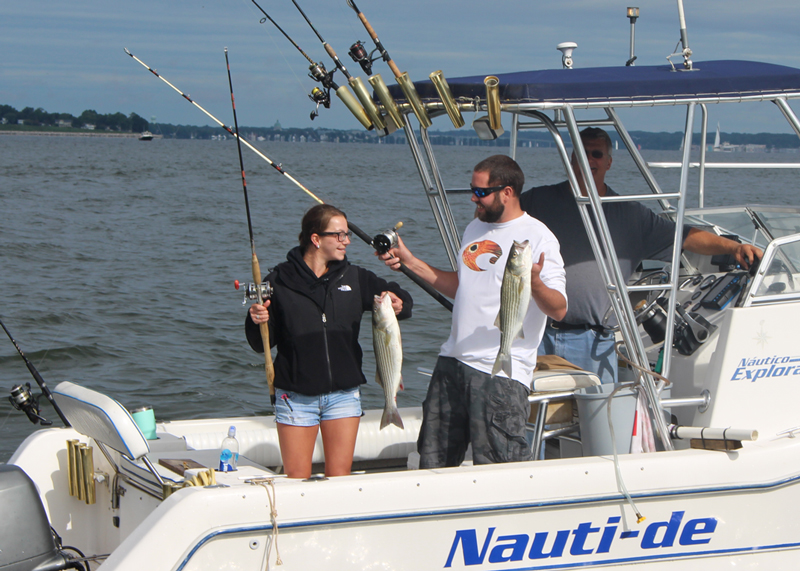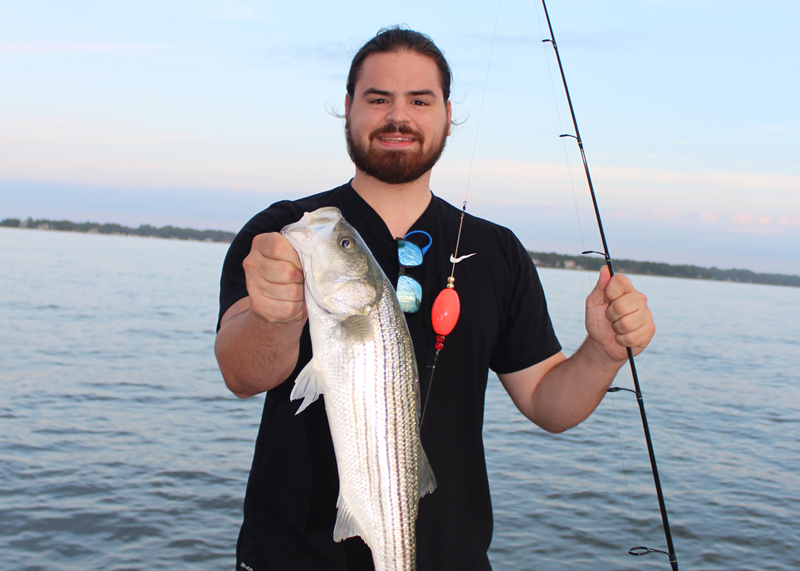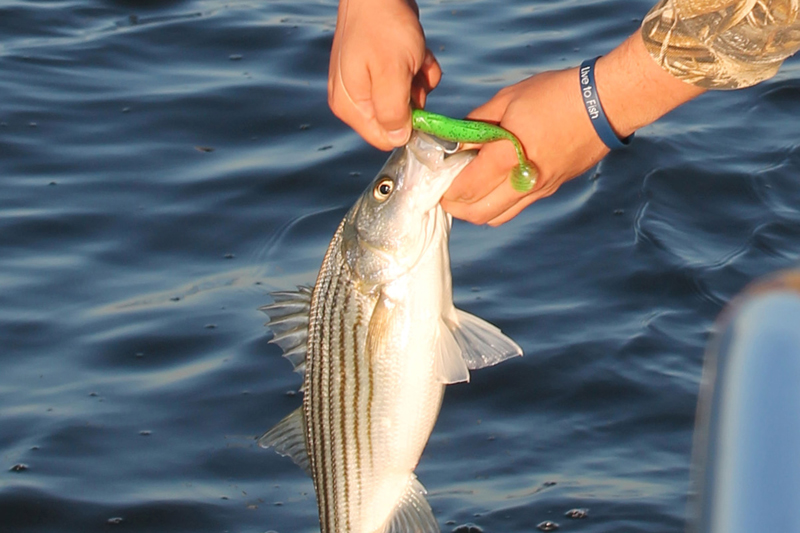One of the beautiful things about Chesapeake Bay fishing, and all forms of fishing for that matter, is that there’s rarely a right way or a wrong way to catch a fish, there’s just what works and what doesn’t. He may think nothing will beat trolling green plugs in 10 feet of water, and he might catch loads of fish. She might think nothing will beat slinging purple jigs in 20 feet of water, and she might catch loads of fish. So, who was doing things the “right” way? Whatever you personally might think, it’s tough to argue with a cooler full of fish.

That said, there are some epic angling arguments that take place time and again in different venues throughout Chesapeake Country. While again cautioning that there are few hard and fast rules in the fishing world, let’s take a look at some of the ragers and see who’s right, who’s wrong, and when there are exceptions to the few rules that do exist.
Fishing Topwater
He said: When a fish misses a topwater strike, stop and pause.
She said: When a fish misses a topwater strike, don’t stop working the lure for even a second.
We say: What are the conditions like, and what sort of topwater lure is it? As a general rule of thumb fish don’t like it when a chunk of plastic sits there floating around looking dead, so in most cases she’s going to be right. This is especially true in calm conditions. But if it’s rough the lure will still have some motion even when you stop working it, and in rough conditions the fish will have a tougher time reacquiring its target for a follow-up strike if you keep it quickly moving along the surface. Now consider lure type. A large, noisy rattler will be easier for the fish to track, so even if the water’s riled up a bit you may be better served by keeping it moving. But if it’s a smaller finesse bait the fish might never find it again if it continues to “flee.”
Popping Cork Rigs
He said: Popping cork rigs don’t work on rockfish.
She said: Popping cork rigs work great for rockfish.
We say: Popping cork rigs don’t work well on rockfish if you fish them the way they do down south, with a chug-chug-pause. But if you keep that cork rig chugging along continuously stripers will smash the trailing lure (as long as they’re feeding at or near the surface).

Rigging Soft Plastic Lures
He said: When rigging a plastic jig, run the hook through the front part of the plastic, only; then pop the hook out into the hook pocket so it sits in the slot between the plastic.
She said: When rigging a plastic jig, run the hook all the way through the thickest part of the plastic and ignore the hook pocket.
We say: Traditional theory is that the jig will have more freedom of motion if you run the hook into the hook pocket, but will stand up to wear and tear better if you run it through the thick part. So, when the bite’s tough go through the pocket and get the maximum motion, but if the bite’s hot rig ‘em the rugged way. Truth be told, however, we can’t tell much of a difference either way.
Rigging Paddletail Lures
He said: Paddletail jigs get rigged with the tail facing down.
She said: Paddletail jigs get rigged with the tail facing up.
We say: We’ve seen paddletails with hook pockets going both ways, which would seem to indicate that the manufacturers feel both ways work. Regardless, this is another case where we really don’t see one iota of difference in the results.

Fishing Circle Hooks
He said: The best way to hook fish using circle hooks is to put the rod in the holder and ignore it until it takes drag.
She said: The best way to hook a fish using a circle hook is to hold the rod, keeping the reel in freespool. Then slowly and gently apply increasing pressure until the fish is hooked.
We say: Wait a sec — what sort of fish are we catching?! When it comes to rockfish they’re both right; slowly increasing pressure is the best modus operandi, but in reality very few people have the patience and self-control to do so. As a result, 80 or 90 percent of the time people will catch more fish just leaving the rod in the holder. But tuna? Those fish move so fast that by the time you can react in any way they’ll be hooked, or not. Drum? Their mouths are sensitive enough that if you leave the rods in bouncing holders, there’s a fair chance they’ll spit the bait before hooking themselves. The way a fish feeds and whether it swims away or stays put after eating has a big affect on the effectiveness of circle hooks, and every species is a bit different.
Live-Lining Spot or Bunker
He said: When live-lining spot or bunker the right way to hook them is through the nose.
She said: When live-lining spot or bunker the right way to hook them is through the back.
We say: What’s the current doing, how deep are the fish, and are you using weight? Spot hooked through the nose tend to stay near the surface, while spot hooked through the tail generally attempt to swim down. But if you hook them through the tail and there’s a strong current, they won’t be able to keep up with it for long and soon they’ll sit dragged tail-first into the flow — not a very natural presentation. Conditions, rigging, and the position of the fish in the water column dictate the answer, for this one.
There are, of course, countless similar arguments that take place on a daily basis throughout Chesapeake Country. Who’s right, and who’s wrong? Neither. Both. Look in their coolers.